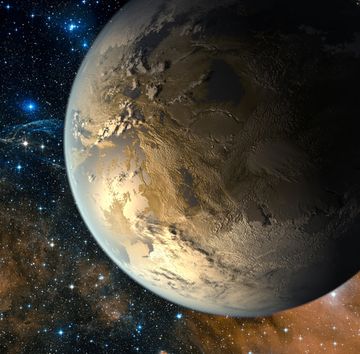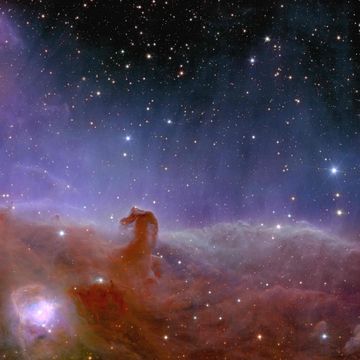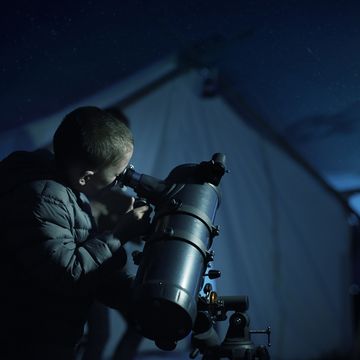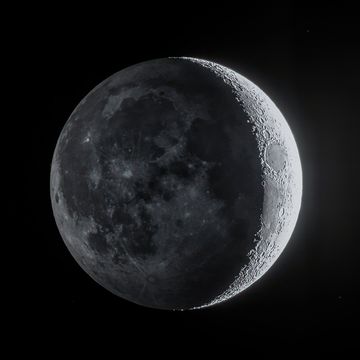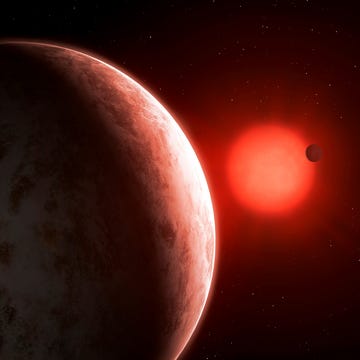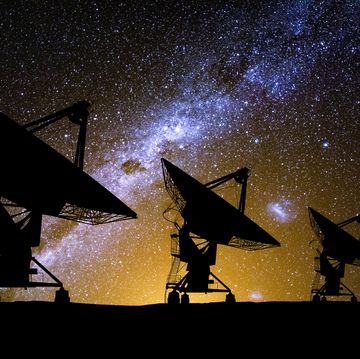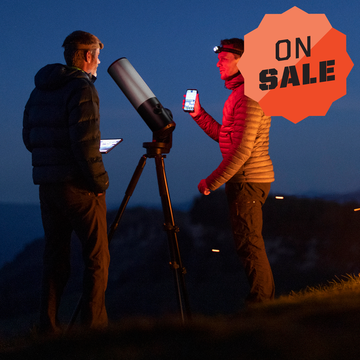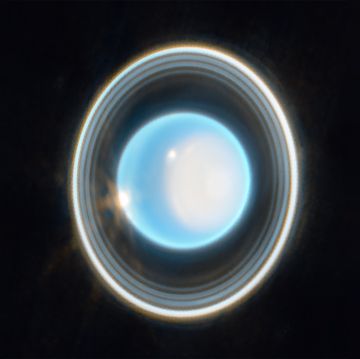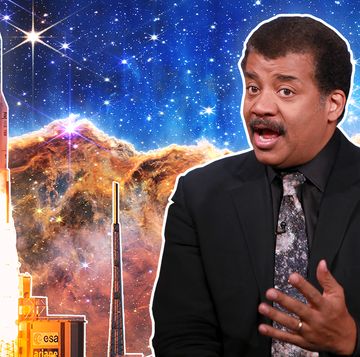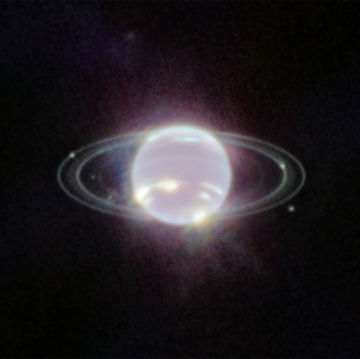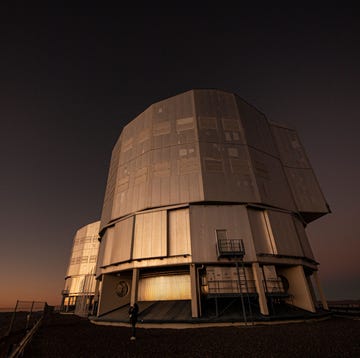It's nowhere near as big as the dinosaur-killing rock that crashed into Earth 65 million years ago, but the 50-meter (164-foot) diameter asteroid known as 2012 DA14 is big enough to take out a good-size city. Fortunately, astronomers say, it harmlessly will fly by Earth when it draws near our planet next Friday.
"Something of this sort would fit pretty nicely, if you put one into Central Park," John Lewis, professor emeritus of planetary sciences at the University of Arizona, tells PM. But having it fall from space would be another story. "It would probably wipe out the width of Manhattan in the east–west direction, but residents of the extreme northern and southern tips of Manhattan might survive."
The Planetary Society's Bruce Betts discussed the close pass during a conference call with reporters this week. At magnitude 7, 2012 DA14 will be just dim enough to be invisible to the naked eye when it passes closest to Earth at 19:25 Universal Time on Feb. 15, Betts says. A good pair of binoculars should suffice to spot the asteroid from the Eastern Hemisphere as it passes from south to north, moving about 1 degree, or 2 lunar diameters per minute. (It will not be visible from the Americas.) By comparison, that's eight times slower than the apparent speed of the International Space Station.
At its closest approach, the asteroid will come within 17,000 miles of Earth. That's close enough, in astronomical terms, Lewis says, "to give you a haircut without breaking your skin. This is really close." The asteroid will pass within the 22,000-mile orbit of geosynchronous communications satellites, but above the International Space Station, which orbits between 230 and 286 miles from Earth.
"If it did hit—which it's not going to, nor will it in the coming decades—it would be about equivalent to a 2- to 3-megaton nuclear weapon," Betts says. "So about 200 times the Hiroshima blast in terms of energy released."
If you've been hearing more lately about asteroids passing closer to Earth, don't be alarmed. Our planet's little swatch of space isn't getting more dangerous; rather, humanity's ability to spot space rocks large and small that pass near to us is slowly getting better. For instance, the Planetary Society provided a grant to the La Sagra Observatory in southern Spain, which allowed the observatory, run by amateur astronomers, to upgrade the camera on one of its three 45-centimeter telescopes. The new camera, which processes images more quickly than the old one, was crucial to spotting the small, fast-moving 2012 DA14 in Feb. 2012.
Not much is known about the asteroid, aside from its size and its orbit around the sun. One of the discoverers, Jaime Nomen, who is a dental surgeon in Barcelona by day, said on the conference call that closer observation as the asteroid sweeps by Earth will give astronomers a better look at its makeup—by determining its rate of rotation, for instance. "If this object is rotating very, very fast, it should be metallic," Nomen says. That's because a body composed of looser, rockier materials would fly apart when rotating at high speed.
In fact, the flyby provides a rare opportunity to do the kind of data collection that the new asteroid mining companies, Planetary Resources and Deep Space Industries, seek to do on more distant asteroids by using specially built spacecraft.
"The nearby asteroids, the ones that actually produce meteorite falls on Earth, vary enormously in their mechanical strength," Lewis says, "all the way from something similar to lake-bottom mud to something very similar to stainless steel. So you could have a 10-meter-size body made of low-strength material that could hit Earth with absolutely no consequences on the ground. It would explode at high altitude, possibly penetrate deep enough to make an impressive sonic boom, but nothing larger than your fist would ever make it to the ground."
Betts says he thinks DA14 probably isn't one of the more dangerous, metallic asteroids based on the generally accepted estimate that such asteroids probably comprise only about 4 percent of the total. Still, next Friday's near miss is cause for sober reflection. "It's really a reminder that we live in a cosmic shooting gallery, and it's a reminder that we need to keep doing our work to find things and to prevent the only preventable natural disaster, which is asteroid impact," he says.
Betts estimates that an object the size of 2012 DA14 strikes Earth, on average, once every 1000 years. "That could be tomorrow, or that could be 5000 years from now," he says.
There are still lots of asteroids out there to be discovered. Lewis estimates that 97 percent of the smaller asteroids like 2012 DA14 are still unaccounted for. That's why it's so important to boost efforts by space agencies and amateur astronomers to catalog the objects in our planet's neighborhood. If humans ever needed to deflect an asteroid headed right for Earth, we'd certainly want to know in advance.
"Time is what makes life much easier in this case, and that's part of the reason it's so important to discover these further ahead of time so you're not just stuck in a position where you're evacuating, or worse yet, just doing disaster management after you got surprised," Betts says.



